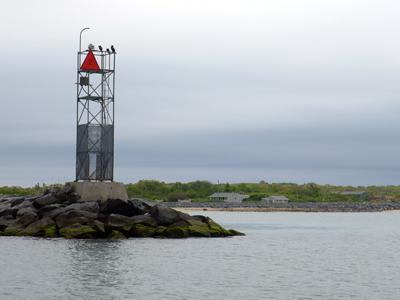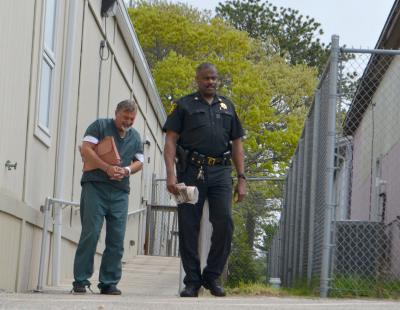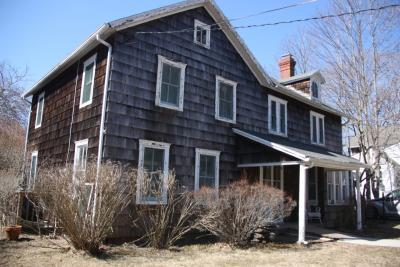New Home for Dramatic Memorial
New Home for Dramatic Memorial

“Dark Elegy,” a sculpture created by Suse Lowenstein of Montauk to depict the grief of those, like her, who lost loved ones in the 1988 terrorist bombing of Pan Am flight 103 over Lockerbie, Scotland, could find a permanent home at Montauk’s Kirk Park.
Ms. Lowenstein’s son Alexander was 21 when he was among the 270 people killed in that incident — 259 aboard the jet, and 11 on the ground.
She and her husband, Peter Lowenstein, have offered the piece to the town, and discussed their proposal at a town board meeting in Montauk on Tuesday. Officials will seek public opinion before deciding whether to accept.
The sculpture has been on display in the Lowensteins’ garden at 11 East Lake Drive, which is open to the public daily, all year, from 10 a.m. to noon. Thousands come each year to see the piece, Ms. Lowenstein said.
The visitors, who learn about the work solely through word of mouth, have included a number of those affected by the Sept. 11, 2001, World Trade Center attack. Ms. Lowenstein began the sculpture the year after the Lockerbie bombing and it was, coincidentally, dedicated on Sept. 11, 1991. It has been exhibited in a number of communities throughout the Northeast.
The sculpture comprises 74 larger-than-life unclothed figures of women positioned as they remembered themselves at the moment they learned of their loss. It depicts Ms. Lowenstein herself, as well as other mothers, wives, and grandmothers who contacted the sculptor and came to her to relive their reactions and postures in the throes of grief.
“I let everyone know what I was doing and I left it up to them to participate,” Ms. Lowenstein said Tuesday night. “I never meant it to be just women, but no men came.”
The couple has proposed installing the pieces in a 75-foot diameter circle in the park, about midway between Fort Pond and the park’s perimeter along Montauk Highway. The area would be covered with garden cloth and the same shredded rubber, made from recycled tires, that was used at a playground the Lowensteins provided at the Montauk Playhouse. No mowing would be needed, Ms. Lowenstein said, and the bronze figures themselves would be covered in a layer of protective wax.
The bronze casting of the pieces, through the lost wax method, would annihilate the original work, executed in a synthetic stone material over steel armatures.
The casting would take a year, Ms. Lowenstein said, if commissioned at two different foundries, with each doing half the figures, or two years if completed at one foundry.
It would be “a multimillion-dollar project,” she said. “It’s actually Mr. Qaddafi’s money we’re using for this,” she said, referring to the Lowensteins’ portion of the $2.7 billion in compensation paid by Colonel Muammar el-Qaddafi’s Libyan government to relatives of Lockerbie victims — reportedly $8 million each. Libya acknowledged responsibility for the bombing in 2003 and agreed to the payment in exchange for a formal end to an 11-year United Nations embargo.
“We didn’t want to spend it for anything else but this,” Ms. Lowenstein said of the money. The couple would also bear the cost for moving and installing the work.
“We love the hamlet,” said Ms. Lowenstein. “Our son loved it here.”
“It’s also very practical,” she said of the Kirk Park site, because it is easily accessible, has nearby parking, and is adjacent to Second House and a planned Native American museum, which would make the area “a natural cultural corner.” The art installation is endorsed by the Montauk Historical Society.
“I hope ‘Dark Elegy’ in Kirk Park will actually become a destination,” said Ms. Lowenstein. Because it is “quite a serious memorial,” she said, should concerns arise about its immediate visibility from the highway, as visitors drive into the hamlet, landscaping could be installed, she said, so that park visitors would have to take deliberate steps to see the work.
In considering whether a public installation might be appropriate, Councilman Peter Van Scoyoc said Tuesday that the powerful emotions evoked by the sculpted postures in their wrenching positions of grief were initially of concern to him. “It’s so emotional, so raw,” he said he recalled thinking after first seeing pictures of the piece. His concerns faded after he experienced “Dark Elegy” in person, he said.
Town Supervisor Larry Cantwell said he had also viewed the work “and was almost brought to tears, honestly.” He said he believed “the sculpture, and everything it represents, belongs in a public place.”
A plan to bronze the sculptures and a search for an appropriate permanent home for them has been in the works for some time.
Representative Tim Bishop introduced a bill some years ago calling for “Dark Elegy” to become a memorial in Washington, D.C.
However, in 2008, the National Capital Memorial Advisory Commission rejected an installation, believing, said Ms. Lowenstein this week, that the work was “too raw.” Instead, she said, the agency told her that it was seeking a more generic tribute to terrorism victims. “There’s nothing generic, in my opinion, about what terrorism leaves behind,” Ms. Lowenstein said.
Mr. Lowenstein said in an interview on Tuesday that the couple feel “very strongly about the community. We love Montauk, and our kids grew up here. We enjoy giving back, and this is a good way of doing it.”
Montauk identifies itself publicly in numerous ways, Ms. Lowenstein told the board — as a beach or fishing destination, for instance. But, she said, “We don’t have a public expression of the vibrant arts community that is here.”
A number of Montauk residents at Tuesday’s meeting endorsed the installation of the sculpture at Kirk Park, calling it a fitting representation of community values and concerns.
“Dark Elegy,” said Larry Smith, “will forever and to all people give a human dimension to that term, ‘international terrorism.’ This is a monument to peace, to universality.” The installation proposal, he said, “is an awe-inspiring act of generosity and love.”
“Art is the visual expression of human emotion,” said Bill Akin. “Through art we share what is common to all people.”
The sculpture, said Ed Braun, “is not a political statement, and it’s not solely about terrorism,” but about “all kinds of loss and grieving.”
On Tuesday evening, following the presentation to the town board, Ms. Lowenstein was in her studio, but took time out to speak to a reporter. She is sculpting with found wood pieces these days. “I sort of feel my life’s work — my most important
work — is done,” she said. “So now I feel I’m sort of playing; I’m having fun in the studio.”







